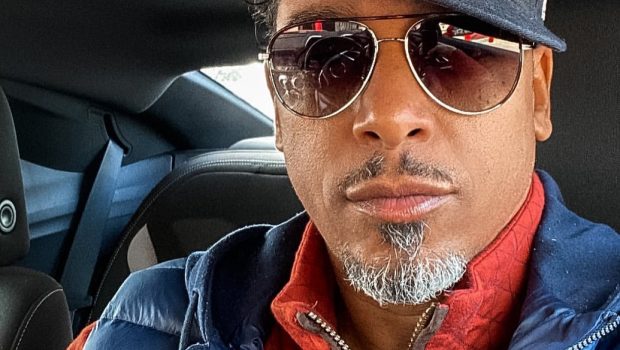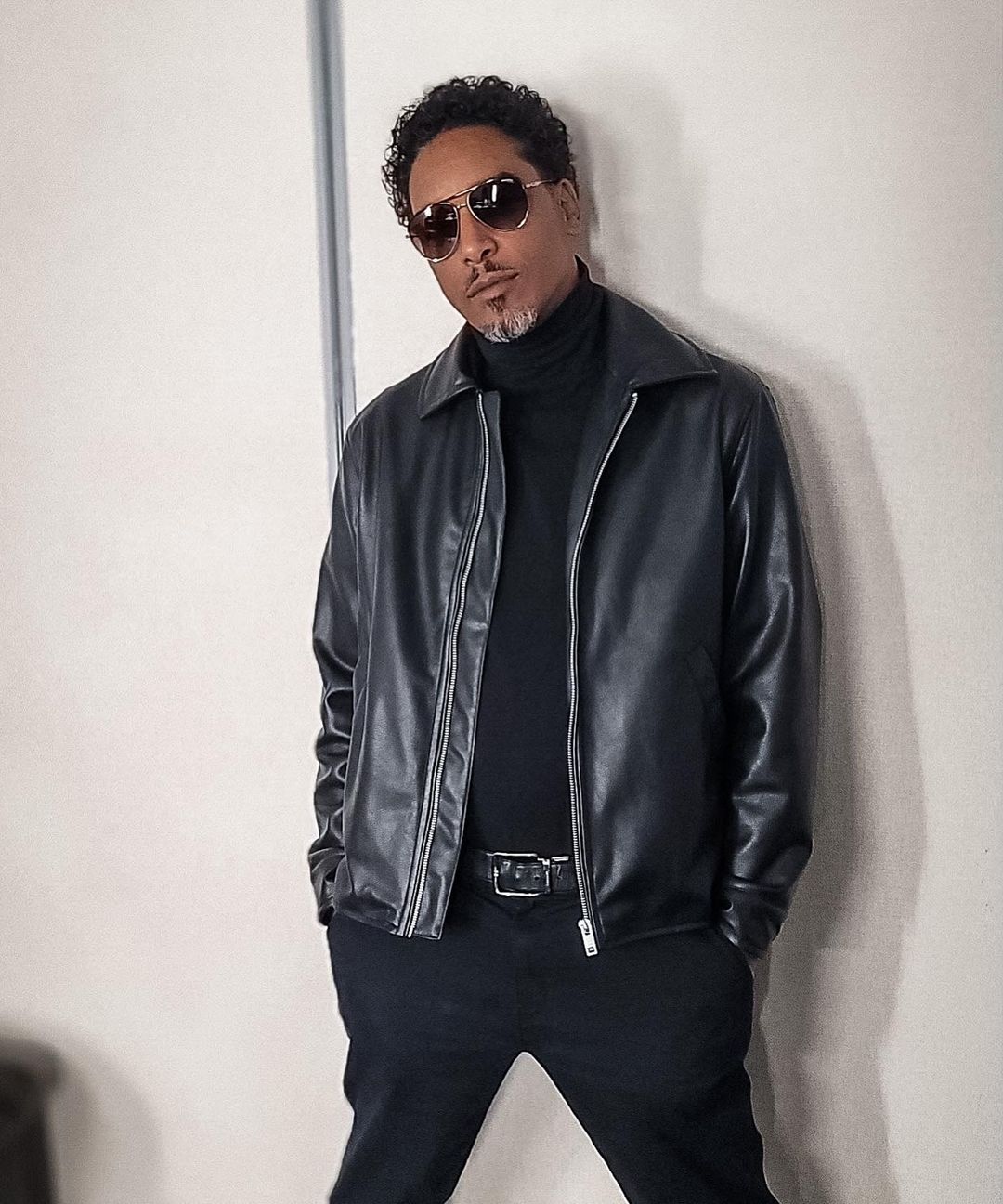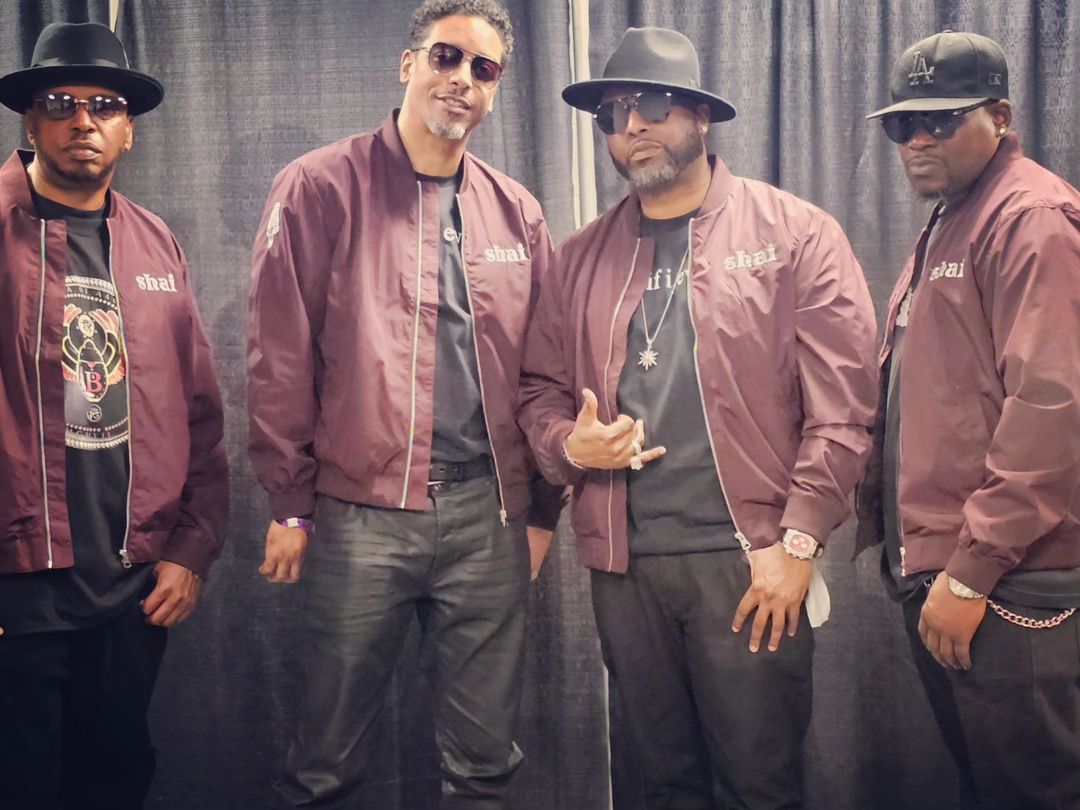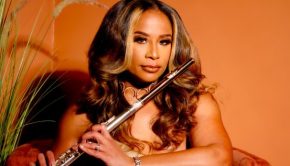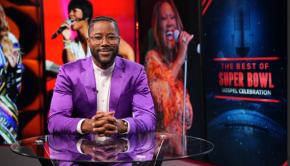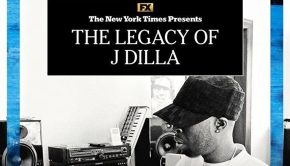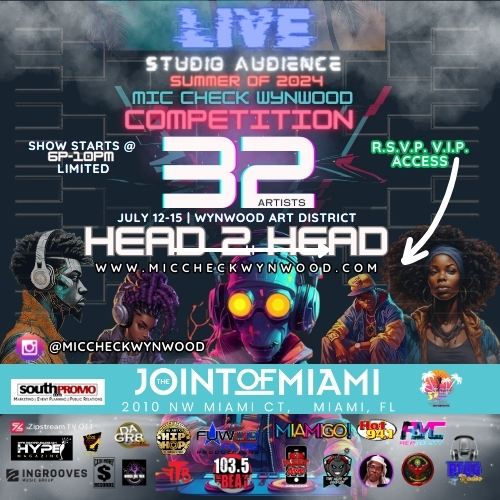The Hip Hop Soul Soundscape Of Garfield Bright [of Shai]
You currently have not one but two brand new solo singles, “What You See?” and “Loves a Vibe,” — Tell me about these particular tracks; how did they actually come to fruition?
And aside from the obvious, how then does “What You See?” and “Loves a Vibe” either differ and / or compare to what the fans / followers already both know and love you for as an integral member of Shai?
“What You See?” and “Loves a Vibe” were made in collaboration with a producer / artist friend of mine who I’ve known for more than 20 years. His name is Anthony Stout, professionally known as Kanetic Source. We wanted to mold a sound and somewhat of a niche within the HIP HOP SOUL genre, and so we did approximately 20 or so songs that we felt were illustrative of our brand of HIP HOP SOUL. The two songs we picked as the first singles to be released captured the vibe we were going for, and we felt like they were good segues into my style, apart from what people know me for, as a member of the group Shai. These two songs represent some familiar elements in terms of what Shai music is known for— and some elements that are more characteristic of me that aren’t typically rooted in the Shai sound. The familiar elements include strong melodies and harmony centric arrangements. My style also foregrounds black love — whether it be romantic love or love for black people in general. Unique aspects of my sound as displayed by the two singles are strong elements of Hip Hop sampling, a more “vibey” cadence, as well as a more in your face delivery of storylines that often tend towards a critique of America’s power structure; i.e. “What You See?.”
As a songwriter, when you sit down to pen your lyrics where do you draw your inspiration from?
When I write, I draw inspiration from the melodies, rhythm, mood and overall aesthetic of the track. At its best, my process is essentially me connecting the dots that are already there to make something that is a seamless marriage between the track and what I put on it. I like to think that the song is just me paraphrasing the essence of what is already there and distilling it into words. My personal style of delivery at its best attempts to to draw in the listener in a manner that foregrounds the content, so it literally sounds like I’m talking to them and telling them a story that happens to be melodic. I want people to feel like the conversational aspect was so prominent that the fact that I was actually singing very nuanced melody patterns is almost overlooked, versus the lyrical content that they are consuming in the moment.
In having said that, how do you classify your overall sound and / or style?
My style is very much HIP HOP SOUL— drawing from Roy Ayers, Gil Scott-Heron, and even contemporaries like D’Angelo, J Dilla and DJ Premier. I tell stories / paint pictures lyrically through metaphor, innuendo and clever rhyme schemes, with an understated but catchy melodic sing songy approach.
Reflecting, tell me your whole inception into music — When did you first become interested in it? And, how did it all begin for Garfield Bright?
I was always a musical being. My parents were Soul music and Jazz music heads, which influenced and continues to influence my creative direction. I was enamored with the concept of harmony at an early age, always seeking to find harmony notes for any lead melody line I would hear. It became an obsession of mine to try to harmonize any and everything I could wrap my head around! Lol. Heavy Jazz pianist influences— Herbie Hancock, Ahmad Jamal, Thelonious Monk, McCoy Tyner, Wynton Kelly and the like. Also, Coltrane, Miles, Tito Puente, Poncho Sanchez…and many others contributed to my melodic and harmonic tendencies. Growing up in the Golden Age of Hip Hop, I resonated strongly with A Tribe Called Quest and others that fused Jazz and HIPHOP to create a unique sound. There are too many Jazz vocalists to name, but I was heavily influenced by the masters; especially around their intonation, and the subtle devices that gave their sound authenticity and created a magnetic vibe.
Now where exactly do you hail from? And growing up there, who all did / do you consider to be your strongest musical influences?
I was born in Nashville, TN. Lived in Montgomery from age 6 til I was 12, then moved to Boston where I came of age. My geographic space in my younger life had less of an impact on me musically, as I was literally in it but not of it—- the move to Boston at a time when HIP HOP was burgeoning as the new mainstream music in America, as well as the go to in terms of youth culture, greatly influenced my mentality as a creative more than anything prior. Movies like Beat Street and videos like “Save the Overtime (For Me)” by Gladys Knight, along with Yo! MTV Raps with Fab 5 Freddy, Ed Lover and Doctor Dré, were places that reflected who I saw myself as. So my eclectic palate is a culmination of all those aforementioned influences. They all show up in my sound if you listen to enough of my body of work as a soloist. Even within Shai, the A cappella song “Yours” where I sing the second verse – which I wrote – is illustrative of my Jazz influences peeking out within a R&B song structure.
What particular string of events led to your initial linking up with Darnell Van Rensalier, Carl Martin & Marc Gay, and the ultimate formation of Shai?
And, how and when exactly did Gasoline Alley / MCA step into the picture?
Shai was born organically at Howard University. In a nutshell, Darnell, Marc and Carl were frat brothers – ALPHA PHI ALPHA – that had come together to perform at a huge talent showcase at Howard. I fell in to play due to myself and Darnell, who was my freshman roommate at Howard, kind of reuniting after he pledged. I was attending all of their rehearsals, and wound up filling in for two other frat brothers who quit prior to the big show. Once we performed “If I Ever Fall in Love” at the talent show, it was received extremely well and we decided to go all out in pursuit of record deal, which came to fruition in October of ‘92.
What eventually caused the group to disband?
The group disbanded because internally we weren’t on the same page. Carl wanted to be his own thing as a soloist, and decided to quit Shai in order to go for it. That created a divide, of course, and ultimately led to the original Shai entity morphing into other iterations to stay afloat.
Switching gears here…
What do you feel has and will continue to be the key to your longevity?
Longevity is based on moving sustainably based upon our assets— our hits; “If I Ever Fall in Love” — “Comforter” — “Baby I’m Yours” — had a high impact on R&B lovers, which allows us to still perform regularly. So, basically, we were blessed enough to create classics in our youth that still resonate with audiences worldwide, to put it simply.
What do you want people to get from your music?
I want people to feel good when they hear our stuff— just want to evoke pleasurable states of mind and feelings from listening to our creations. Enjoyment basically- without going too deep.
On a more serious note, are you happy with the current state of R&B?
Just like anything R AND B as a genre of music in mainstream society is reflecting what broader society is pushing. To indict the music’s perceived shortcomings, without looking at society as a whole in terms of what it is projecting would be shortsighted. So I reserve any critique based upon the knowledge of how the macro sets the tone. I can’t critique the music unless I critique Fox News, reality TV, the school to prison pipeline, the over-sexualization of minors as normal, and so many other factors that contribute to the worldview and mentality of would be creators. What becomes culture in America typically isn’t created in a vacuum, so…
Do you have any other outside / additional aspirations, maybe even completely away from music?
Outside aspirations— well, I have a Ph.D. in educational policy studies from Georgia State. I am actually Dr. Bright. So I am an educator. I specialize in urban environments and creating engagement in the classroom. I focus on critical and digital literacy with the youth that I serve, and the importance of proactively creating counter narratives to the stereotypes that have permeated society becoming ubiquitous to the point of becoming self-fulfilling prophecies in lots of cases. I also do a little acting, and am trending in that direction. I just completed a fictional book project called ‘Lotus 3013,’ that is a combo of The Lord of the Rings, Harry Potter and Beat Street — so I also have an author’s hat that I wear when I’m not recording or teaching.
To date, what has been your greatest career moment(s), at least thus far anyway?
Too many great moments to isolate any properly. We won an NAACP Image Award in 1993 though. That was special— performed with Michael Jackson, Quincy jones, Ray Charles, Diana Ross and others at Bill Clinton’s first inauguration—Prince invited us to Paisley Park to kick it and explore the space with him and a few others— and our very first tour was incredible including the likes of SWV, Silk, H-Town, Jade, BBD, and Naughty by Nature.
What’s an average day like for you?
An average day is lesson planning— content creation on social media, strategizing and positioning my brand to affect larger circles of influence, song ideas and demos for future use, as well as being a husband to my wife, Demetria, and all the things that entails
Please discuss how you interact with and respond to fans…
Fans— I interact positively, honestly and humbly to the best of my ability. Very appreciative of all that appreciate me, and express that sentiment via social media or in person.
What is your favorite part about this line of work? Your least favorite? And, why?
Favorite aspect— connectivity and mutually gratifying exchanges coming out of appreciation for the music. Least favorite—-any unnecessary political or bureaucratic baggage that invades the space, hindering connectivity and win-win end games.
What advice would you have for someone wanting to follow in your footsteps?
Stop living in a win-lose paradigm and create win- win interactions and outcomes. Instead of either or, commit to “both— and” as a way to move that allows everything that resonates with you to come into fruition and not just one aspect. In other words, if you happen to be multidimensional be that freely and don’t chose one aspect at the expense of developing some other aspect of self that is equally important to you.
“If I Ever Fall in Love” is a bonafide R&B classic — How did this particular composition come about? Who came up with its concept? And, please describe for me the overall studio vibes on that fateful day?
Carl wrote the lyrics— Darnell was instrumental in arranging the melodies in the A cappella — we all put our own little touches on the musical version arrangement-wise. We went old school in terms of how we recorded the original version with all of us huddled together in the sound booth singing all the harmonies in one microphone in order to capture an authentic blend. It came out exactly the way we hoped. The rest was history. We knew it was special immediately. Time has bore witness to that fact. Blessed.
What’s up with Shai (the collective)?
The Shai collective? If you’re referring to the original 4 members, the answer is, simply, nothing is up.
Lastly, what’s next for Garfield Bright?
Next for me—- more music, more fictional and non fictional works in book form, a YouTube channel featuring odds and ends of my scope as a scholar / musician—and more acting.
Any “closing” thought(s) for our readers?
Closing thoughts? I’ve said a whole lot in answering the questions. Should already be enough to get something from. I would leave by saying thanks for reading and listening. Hope something resonated.
Connect w/Garfield Bright Online:
Tweet

